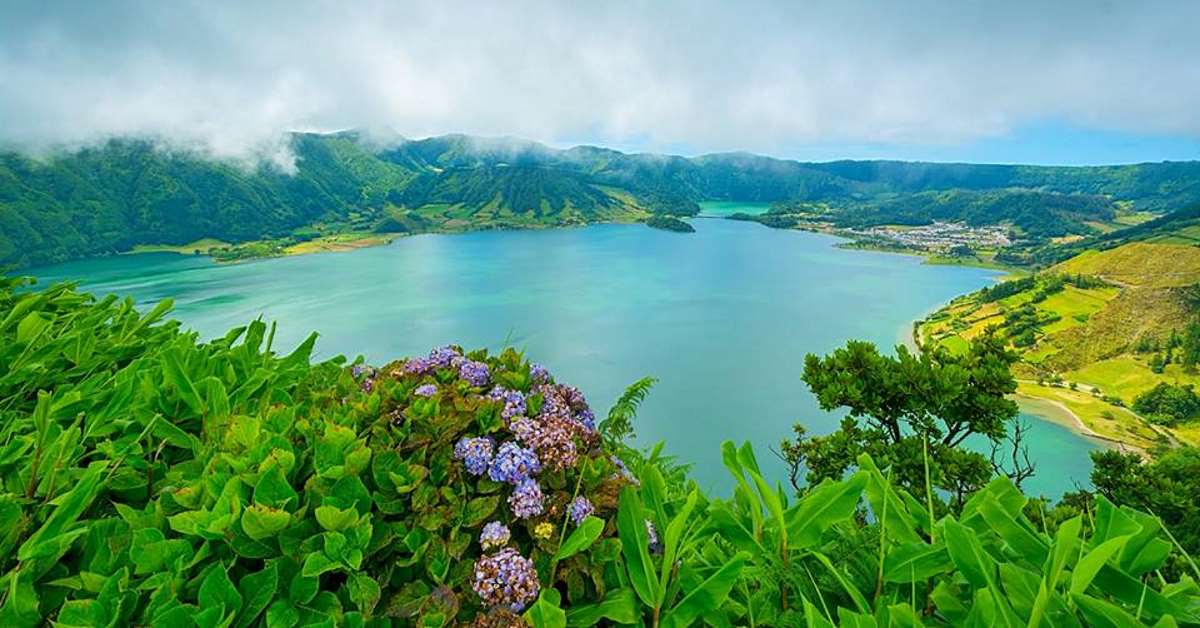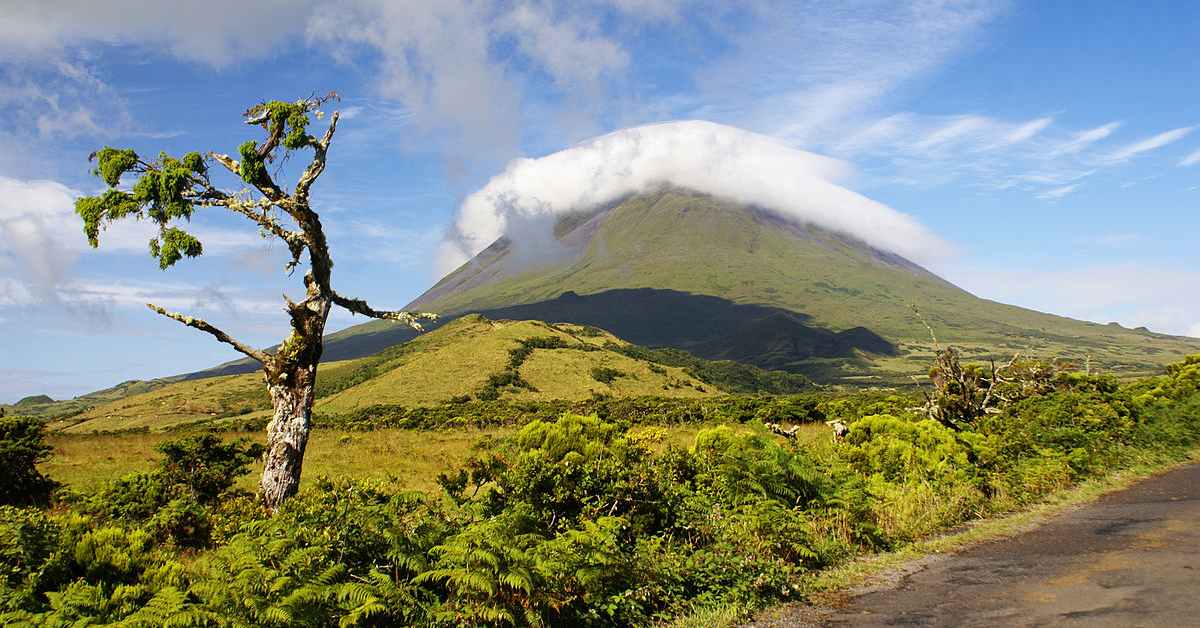If you thought that vacation in Portugal Similar to something else you know from the European continent - think again. Now take what you got and throw it even further. how far? About 4,500 kilometers southwest, to the South American region. The breathtaking nature, the combination of green, white and blue, the eyes that never stop looking around - these (and more!) will probably take you back to your post-army trip to South America, and if you haven't done it yet or you've done it to another continent, take a few minutes and get an idea Out of the box for your next trip.
It's impossible to talk about Azores Islands Not to mention their stunning views. It would be a real natural wonder even if these were ordinary low islands, but the fact that these are high islands built on volcanic rock makes the area and its setting much more dramatic. Crystal clear water, long beaches with fine white sand, hidden lakes in abundance, green hills and valleys all year round (and thanks to the weather), huge areas covered with hardened lava and even an island formed by the eruption of a volcano. Where else in the world will you find all this grouped together?
Keep in mind that what you will read here is only a very modest sample of the selection and natural wealth of the archipelago. Allow yourself to come and be surprised, ask the locals and the hotel where you are staying to discover more of this goodness.

The Lagoon of the Seven Cities (Lagoa das Sete Cidades)
It is one of the most amazing places in all the Azores, and is only about fifteen kilometers west of the capital, Punta Delgada. These are two adjacent lakes separated from each other by a narrow isthmus. The lakes were formed inside volcanic craters, so their banks rise from the ground suddenly and sharply.
The lakes are full of green water with emerald stones, and the recommendation is to choose a particularly beautiful sunny day when you get to them. You can drive on the road that surrounds the lake, enjoy its different angles and take pictures that will stay with you for a long time (although don't expect them to really convey what your eyes will see).
The most recommended place for viewing the lakes and their surroundings is the "King's Viewpoint" (Miradouro do Rei), located in the western part of the lakes. It is an ideal vantage point, which also gives a certain sense of destiny as the drama of the landscape combines with the abandoned skeleton of the nearby Monte Palace Hotel.
Montanha do Pico
This conical volcano is the main inhabitant of Pico Island, and is also the highest mountain in Portugal. It rises to a height of 2,351 meters, and its summit often disappears in the clouds, which creates a somewhat mystical aura around it. Its last eruption was at the beginning of the 18th century, so you have nothing to fear from it. In addition, despite its conical shape, Mount Pico rises from the ground relatively gently, compared to other volcanoes in the world. This fact makes it relatively easy to climb, even for not very skilled climbers.
In order to climb the mountain, you must register at the visitor center before starting the route. The route to the top is marked entirely by wooden posts stuck in the ground every fifty meters, which will let you know how far you have climbed up to that point. If you are lucky and arrive on a day with good visibility, from the top of the mountain you will be able to see both around the island of Pico and the neighboring islands, Payal, Graciosa and others.
Algar do Carvao
The volcanic activity in the Azores creates natural phenomena that are hard to believe exist. The many lagoons that fill the craters throughout the archipelago with emerald water are an example of this. Elgar du Carabao's shaft is another example, and even more bizarre.
The place is actually a long pit in the ground, created as a result of seepage of lava in one place. This lava tube created a shaft about a hundred meters long, which can be entered. Entering this narrow hall of the extinct volcano, overgrown with vegetation, is a surreal experience. Looking up, to the sky, through the black walls of the shaft and the plants that survive on them, you seem like a customer from another world. This is definitely not a place for claustrophobic people.
The vegetation on the walls of the shaft is possible thanks to the isolation created by the lava from the immediate environment. Down the shaft you will see stalactites of silica, and at the bottom lies a lake of clear water that has accumulated in the place over the years.

Lagoon of Furnas (Lagoa das Furnas)
This unique place on the northwest coast of São Miguel Island will allow you to watch volcanic activity in action. This is a dry lake, where a raised wooden track was built for the benefit of visitors to the place. When you walk on the wooden ramp, you will see small craters from which steam clouds rise. The heat of these craters is a direct result of volcanic activity.
The locals make a lot of use of these pools, known as Furnas (ovens). Chefs from the restaurants in the nearby town of Furnas bring here their cauldrons, filled with a local stew of meat and vegetables called Cozido, and let them cook in the small, hot craters. If you come to this site around midnight today, you can see these chefs (or, rather, their assistants) fishing the cauldrons out of the craters and bringing them back to the restaurant kitchen, to tell their contents to the hungry diners.
The pool of Dona Beija (Poca da Dona Beija)
If you are not satisfied with just seeing the volcanic activity, and you also want to experience it, this is the place for you. It is very close to Lagoa das Furnas, so you can combine the activities together.
This is a group of hot springs, with water coming from volcanic caves. The water emerges from the caves at a temperature of more than forty degrees, which in the past formed the original bath for the bathers. Later, a canal was dug, which today leads the water to several pools, each at a different temperature.
Keep in mind that these pools are very popular, and they are mainly the ones that brought the town of Fornas its reputation. The pools have undergone a relatively extensive renovation recently, and are now more organized than ever. The pleasure of the temperature of the water, together with the tropical vegetation that fills the place, will remind you again why you came here.
The tiny island of Vila Franca do Campo (Ilhéu da Vila Franca do Campo)
About a kilometer into the ocean off the coast of the town of Vila Franca do Campo, located on the island of São Miguel, lies this tiny volcanic island. It is not just an island, but a volcano that sunk into the ocean. Its unequaled sunset has led to the fact that it offers its visitors a variety of activities, that it is hard to believe that there is another place in the world that offers them to you.
One side of the volcano has left quite a large part above the water, which allows visitors to the place to lie on the slope of the volcano and sunbathe on nice days. The inside of the volcano has become a pool fed by ocean water, where you can swim in peace. The fact that only a small strait connects the ocean to the center of the sunken volcano (at least on the surface of the water), creates complete protection for the swimmers from the currents of the Atlantic Ocean, which can be serious at times. In addition, like many of the other volcanoes of the region, this sunken volcano is also completely covered in rich vegetation, which makes the sight even more surreal.
This island can be reached by ferry that leaves from the dock of Villa Franco do Campo. This place is very popular, especially during the tourist season, so it is recommended to leave early to enjoy it.


